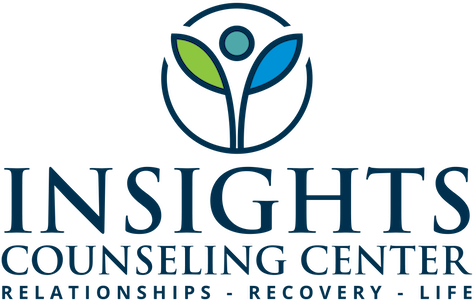Building a Future Together: How Couples Therapy Can Help You Co-Create a Shared Vision
When couples come to therapy, it’s often because something isn’t working in the here and now. Communication is strained. Intimacy feels distant. Conflict is recurring. But beyond solving problems, one of the most meaningful gifts of therapy is that it helps you look forward. It’s not just about healing the past—it’s about dreaming the future. Together.
Couples therapy offers a structured space to explore not just what’s going wrong, but what you’re both working toward. This forward-looking perspective is essential. It anchors the work of healing in something hopeful: a shared vision of the kind of life and relationship you want to build together.
Why a Shared Vision Matters
Every couple enters a relationship with individual hopes, goals, and expectations—many of which go unspoken. One partner may dream of living near extended family, while the other imagines building a life across the country. One might long for adventure and change; the other may crave security and routine. These differences aren’t problems in themselves. But when they remain unspoken or misaligned, they can lead to disappointment, confusion, or a sense of drifting apart.
A shared vision gives your relationship direction. It becomes the “why” behind the hard conversations and the “what for” that makes compromise feel worth it. It helps you remember that you’re not just solving issues—you’re building something meaningful together.
From Assumptions to Alignment
It’s easy to assume you’re on the same page about big life decisions—until something reveals that you’re not. Whether it’s parenting styles, financial priorities, career plans, or how you spend the holidays, unspoken assumptions can create major disconnects.
In therapy, we slow down those assumptions. We ask curious questions like:
What does “success” look like to each of you?
How do you envision your home life five years from now?
What kind of legacy do you hope to leave together?
These questions help uncover the deeper values underneath surface-level preferences. Maybe the desire to save aggressively isn’t about control—it’s about wanting to feel prepared and provide for the family. Maybe the push for more spontaneous time together isn’t about irresponsibility—it’s about longing for connection and play.
Therapy helps translate assumptions into attuned understanding, and from there, into intentional choices.
Creating a Relationship Vision Map Using the Gottman Method
One of the powerful tools we use in couples therapy is a relationship vision exercise, guided by interventions from the Gottman Method. Think of it as a flexible blueprint you co-create—not something rigid or final, but something that evolves with you as your relationship grows.
Here’s how we use Gottman-based exercises to support this process:
Individual Reflection: Using tools like the Gottman Love Maps and Dreams Within Conflict exercises, each partner has the opportunity to explore and share their inner world—personal dreams, values, and desires. This step honors your individuality within the relationship and builds emotional intimacy through deeper understanding.
Shared Discovery: Together, you begin identifying where your values and goals overlap. Through structured conversations and open-ended questions, you’ll learn how your dreams may align or complement each other. This process fosters connection and builds the foundation for mutual respect and admiration.
Naming Potential Tensions: Using Gottman tools such as the Conflict Blueprint or the Aftermath of a Fight, we explore places where your hopes or priorities diverge. Rather than avoiding these tensions, therapy creates space to hold them with curiosity and compassion. You learn how to manage gridlocked conflict and stay connected even in disagreement.
Integrative Planning: Finally, we use interventions like the Gottman Weekly State of the Union Meeting to build rituals of connection and plan forward intentionally. These structured check-ins support shared goals, help you nurture your friendship, and keep you on the same page as life continues to change.
Whether you’re building a family, starting a business, navigating a blended household, or rebuilding after a painful season, couples therapy—rooted in Gottman Method interventions—offers the clarity, tools, and emotional safety you need to co-create your relationship vision with confidence and care.
How the Process Heals as You Go
The very act of creating a shared vision can be healing. You learn how to:
Express yourself more clearly and vulnerably
Listen to your partner without jumping to defensiveness
Recognize patterns that have blocked future-oriented thinking
Build trust through follow-through and shared decision-making
Even when you don’t agree, the process of slowing down and attuning to each other builds emotional safety. It becomes easier to collaborate rather than compete. You begin to feel like you’re on the same team again—not just reacting to problems, but creating something you both care about.
An Invitation to Dream Again
If you feel like your relationship has been in survival mode—or if you’ve never really talked about what you’re building together—it’s not too late. Whether you’re dating, engaged, married, or somewhere in between, therapy can help you move from reacting to each other’s differences to dreaming forward with purpose.
You don’t have to settle for a relationship that just “gets by.” You can co-create a future that reflects both of you—your values, your passions, your dreams. It doesn’t have to be perfect, but it can be intentional.
Let’s Build Something That Lasts
If you’re ready to move beyond day-to-day survival and start building a future you both believe in, we’d love to help. The couples therapists at Insights Counseling Center are trained in helping partners reconnect, realign, and renew their shared purpose. Reach out today to schedule a session and begin building your relationship vision—together.

